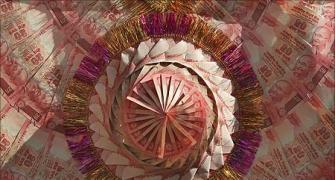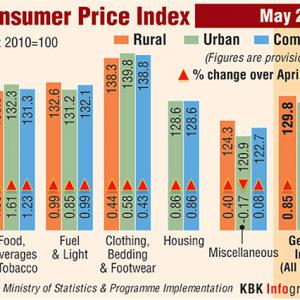High current account deficit and huge gold imports, decline in foreign reserves and withdrawal of investors from Indian market are some of the reasons behind the sharp fall in rupee, reports Rediff.com's Faisal Kidwai Intervention by India’s central bank to check the record fall in rupee does not help much as it reduces ammunition (reserves) kept for imports, says an analyst.
Intervention by India’s central bank to check the record fall in rupee does not help much as it reduces ammunition (reserves) kept for imports, says an analyst.
The rupee, which fell to an all-time low of 58.98 against dollar on Tuesday, recovered by 19 paise to 58.20 against the dollar in early trade on Wednesday.
The government and Reserve Bank of India should allow the rupee to find its own level, says Anil Bhansali, Vice-President, Markets, Mecklai Financial.
He says one of the steps the government can take to boost the rupee is to remove the bottlenecks in foreign direct investment and foreign institutional investments as that would make India an attractive destination for investors.
“Until our exports/invisibles increase significantly and as long as we are dependent on foreign flows for our current account deficit funding, the rupee will continue to depreciate significantly,” says Bhansali.
There is not only a need to implement better policies to boost exports, but we should also focus on improving the quality of products we manufacture so that we can compete with other countries, especially
Another area that needs to be a priority is making India an attractive tourist destination as that would increase foreign exchange and help the currency, says Bhansali.
According to him the main causes for the fall in rupee are:
a) High current deficit, particularly in May, when trade deficit rose considerably. That was because of high gold imports in the months of April and May
b) Decline in foreign reserves by $4 billion as on May 31, 2013
c) Talk of withdrawal of quantitative easing by US Federal Reserve as early as September due to better data coming out of the US
d) A rising US dollar particularly against emerging market currencies and Asian currencies except yen and yuan
e) Buying of US dollar by RBI in the months of March and April at the levels of Rs 53.66
f) Borrowings by corporates to take advantage of the arbitrage between US and India yields thus increasing our external liabilities, particularly the short-term ones
g) Elevated current account deficit, dependency on foreign institutional investment flows, weak rupee, poor growth impact on fiscal deficit and high retail inflation
h) Withdrawal of foreign institutional investment from debt funds as they found the levels in India unattractive and shifted their funds to the US
“Expect the rupee to reach a level of Rs 62 by the end of the September quarter. In the near term, since the fall has been sharp, we may see it moving up to Rs 57.05 a dollar from where it could reach Rs 62,” says Bhansali.








